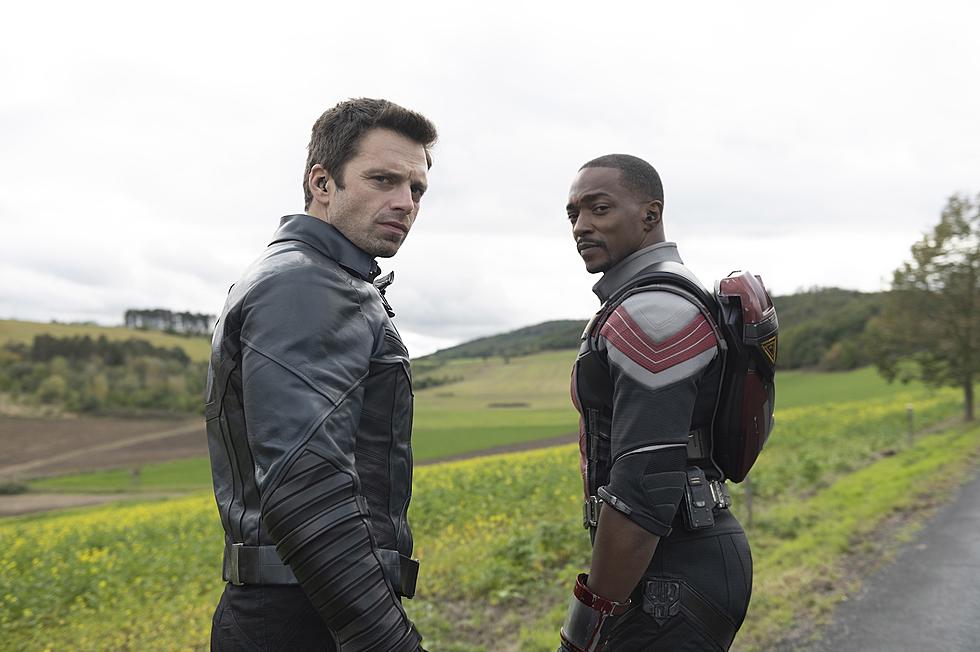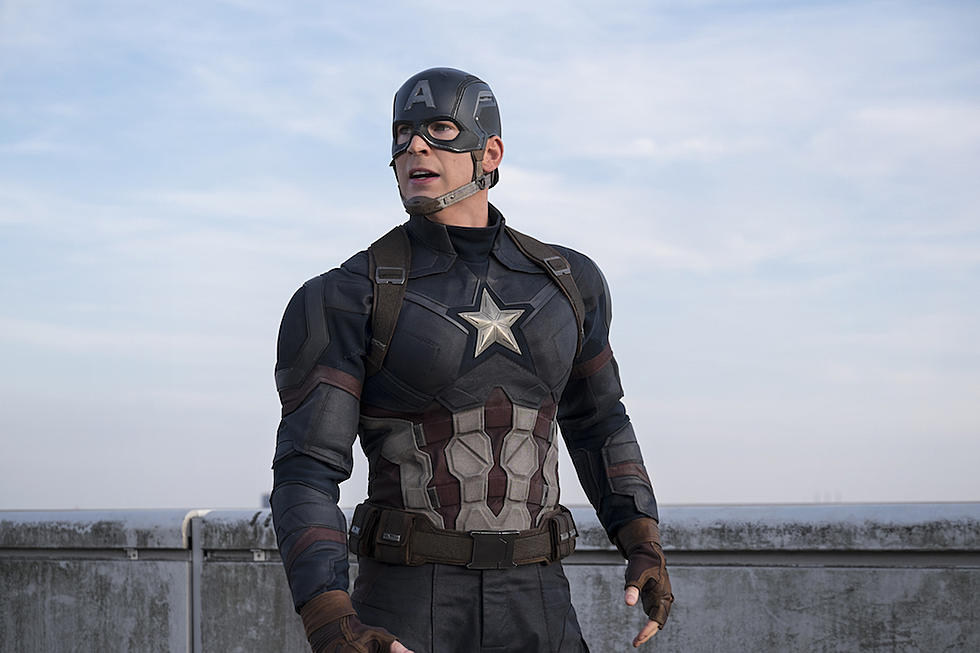
EXCLUSIVE: 1940s Captain America Strip Coming Daily at Marvel Digital
 The long-lost "Captain America" newspaper comic strips from the 1940s have recently been rediscovered, and they're making their digital debut this Sunday as a new daily strip on Marvel Digital Comics Unlimited. Written and illustrated by Karl Kesel with colors by Ben Dimagmaliw, the strip harkens back to the era of classic newspaper adventure strips like "The Phantom" and "Terry and the Pirates," offering readers a daily dose of the patriotic hero's earliest adventures.
The long-lost "Captain America" newspaper comic strips from the 1940s have recently been rediscovered, and they're making their digital debut this Sunday as a new daily strip on Marvel Digital Comics Unlimited. Written and illustrated by Karl Kesel with colors by Ben Dimagmaliw, the strip harkens back to the era of classic newspaper adventure strips like "The Phantom" and "Terry and the Pirates," offering readers a daily dose of the patriotic hero's earliest adventures.
"Bringing together a blast from the past (newly discovered strips from the '40s) and the cutting edge future (Marvel Digital Comics Unlimited) is a match made in company synergistic heaven," said editor Bill Rosemann, who described the book as "shield-slinging star-spangled Captain America joining his loyal, wise-cracking sidekick Bucky for a daily jolt of awesome action, daring drama, femme fatales, rampaging robots and no-good Nazis!"
Marvel Digital Comics Unlimited will post a new "Captain America" strip every day for three months, for a total of 85 comics including special Sunday-sized editions. "In this particular case, with it designed to be a daily strip, it just makes a lot of sense to deliver them digitally first so we can actually offer them daily," said VP of Content and Programming John Cerilli. After the strip is finished online, Marvel plans to collect the strips and print them in three monthly comic books, with covers by Butch Guice.
Careful readers and comic book historians may, perhaps, be reflecting right now on the fact that there was no "Captain America" newspaper strip -- or Karl Kesel -- around in the 1940s, but we hope you won't let a silly little thing like reality get in the way of a great high concept. Kesel, who had the original idea for a faux-'40s Cap comic, talked with ComicsAlliance about the classic adventure comics that inspired him, and how his new Golden Age tales aim to transform an old comics format into a very new one.
ComicsAlliance: Where did you originally get the idea of creating old school "Captain America" adventure strips and presenting them as discovered artifacts?
Karl Kesel: Back in the '90s I actually did an "Indiana Jones" miniseries for Dark Horse that I wrote, and I had the idea that I wanted to do it as though it was an old adventure comic strip. In fact, the name of the miniseries was "Indiana Jones and the Sargasso Pirates," it was named after a strip called "Terry and the Pirates." I was much more interested in this conceit than Dark Horse so that never went anywhere, although I did structure the entire miniseries as a collection of dailies. So that idea was in my head, and one day I wrote up and I wrote an email to [editor] Tom Brevoort and said, "You know what you should do? You should collect the old Captain America adventure strips from the 1940s, except that it never existed! But it should have!" I thought it was the wackiest idea I've ever sent [editor Tom] Brevoort – and I've sent him some pretty strange ideas – and Brevoort loved it for some reason. And when he likes an idea it gets approved really quickly. So that's really the genesis of the idea.
CA: Did you originally conceive of it as a digital comic strip? It's a really interesting idea – taking this much older comic book format and perpetuating it through a very new comic book format.
KK: From the beginning, I saw it as going online. I really think that's the future of comics. At the same time, I have a deep love for the old adventure comic strips. I really wish I'd been born 50 years earlier so I could have been around in their heyday. And really there's no place for them now in newspapers, but I think that kind of comic could be alive again online. Milton Caniff's great quote is that his job was to sell the next day's paper. Adventure and serial strips in the '30s and '40 were a huge part of the success of those papers. Of course, TV didn't exist then; video games didn't exist then. The internet didn't exist then. It was the cheapest form of entertainment, and it could take you all around the world.
I have very distinct memories of when I first discovered "Terry and the Pirates," and it really was a life-changing moment for me. It sounds stupid, but it was the first time that I realized comics could be interesting without superheroes. For reasons I can't explain, I just have a real affinity for them. I've even structured my Sunday comics like the old Sunday strips, where the logo panel could be dropped away if the newspaper wanted to fit more strips on the page. I'm really trying to make this like it would have been.
CA: Do these strips fit into any particular place in Captain America continuity?
KK: The setting is shortly before America is in World War II. I said, let's just imagine that when "Captain America" #1 came out in 1941 – let's assume that because it was enormously popular, they decided to get a newspaper strip going right away. The costume he wears is the same on from the [Jack] Kirby run on "Captain America"; I make reference to the characters Captain America in the very earliest issues. Golden Age continuity is very flexible and fluid, so I have a general idea where it fits in the continuity but it's not set in stone.
CA: Is there a single story arc from beginning to end?
KK: Yes, it's a three-month story arc, which was fairly typical for the era. The initial hook is that this is before America is in the European War, as we call it here, and obviously we see Project: Rebirth, the origin of Captain America – that's the very first Sunday [strip]. And because there are no more super soldiers except for one, they introduce Operation Firebird, which is America's attempt to create another super soldier before we get sucked into Europe's war. They're taking a number of different approaches to this; one man is building a big remote control robot. Another man is trying to experiment with vitamins and minerals. And Dr. Todd is running a battery of tests on Captain America, and trying to reconstruct the super soldier serum. Things keep going wrong in this place, and we have a villain show up that I think most Captain America fans might expect. I don't want to say anything else except that I'm very pleased with how I worked him into the story.
CA: How does working on a newspaper style strip compare to working on comic books?
KK: I actually feel more at home in this than I do in regular comic books. And I have to say, working on the "Captain America" strip, I love the pacing of these things. I love that every three or four panels you have to have some little hook, and slowly over the course of the week you build until Sunday, when you have this big moment in [a comic] the equivalent of three dailies. Then you start all over again on Monday. It's a ton of work, but I love every minute of it. I haven't had this much fun on an assignment since "Spider-Boy" from the Amalgam comics. And I remembering things to myself at the time, "Why can't all comics be this fun?" I could spend the rest of my career doing a strip like this.
More From ComicsAlliance










